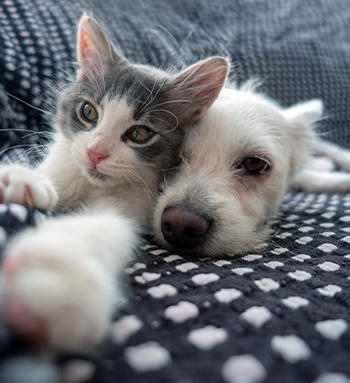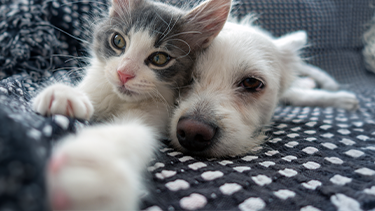Does a Cat Water Fountain Have to Be Stainless Steel? Exploring the Benefits, Options, and Best Practices

No, a cat water fountain does not have to be stainless steel—though it is a popular choice, it’s not the only option. Many cat water fountains are also made from ceramic or BPA-free plastic, each with their own pros and cons. In this article, we’ll quickly compare these materials, highlight the benefits of stainless steel, and give you practical tips to help you choose the best cat water fountain for your feline friend. Whether your priority is hygiene, durability, or style, you’ll find the right solution here.

What is a Cat Water Fountain?
A cat water fountain is a piece of equipment that ensures that water is moving on a continuous path with installed filtration devices providing a continuous loop of water. This free flow resembles the flowing water which the cats prefer in the wild. The design eliminates stagnation, minimizes bacterial growth or accumulation and makes your cat more comfortable because the water is newer and prettier. Various fountains are electrical and operate with minimum noise, some rely on gravity in ensuring that there is flow of water.
To see why cats can benefit from such a system of hydration, it is essential to examine the role that water has in cats.
Why is Hydration Important for Cats?
Water plays an important role in the health of cats. Cats lack the powerful drive to drink that dogs have. They mainly acquired their moisture when feeding on prey in the wild. The risk of dehydration is more real with domestic cats, particularly dry food fed cats. The absence of enough water may make cats experience urinary tract infection, kidney failure and constipation.
The solution is a fountain that presents cool, filtered water in an interesting way that your cat can find appealing. A small modification can result in lifelong health improvements.
With that said about the necessity of hydration and the role of fountains now, we can tackle the main concern: Is stainless steel required for such fountains?

Does a Cat Water Fountain Have to Be Stainless Steel?
Not necessarily. While stainless steel is often recommended for its hygienic properties and durability, other materials are also commonly used for cat water fountains. These include BPA-free plastic, ceramic, and glass. BPA-free plastic is lightweight and affordable but may require more frequent cleaning to avoid odor buildup. Ceramic fountains are sturdy and resistant to bacteria but can be heavier and breakable. Glass fountains offer a sleek look and are easy to clean but may be fragile. Choosing the right material depends on your cat’s preferences, ease of maintenance, and durability requirements.
Materials Used in Cat Water Fountains
Cat water fountains are normally available in three media which include; plastic, ceramic and stainless. They each have their positives and negatives, based on your budget, what you like to clean, and how sensitive your cat is.
Why Stainless Steel?
Stainless steel is highly considered as the most hygienic. It is resistant to bacterial growth, does not leak chemicals and is very hard wearing. It is also safe in the dishwasher and less prone to scratching compared to plastic-feeders in which scratches harbor dangerous bacteria in the feeder, which can result in feline acne or wound infections. Various veterinarians prefer stainless steel because of the following reasons.
Alternative Materials
Stainless steel is a great option, but ceramic and plastic fountains are also in demand. The ceramic fountains are most of the time attractive and they are heavy in stature that they cannot be tipped. With appropriate glazing, ceramic is non-porous and safe, though subject to chippage with age. Plastic fountains tend to be the cheapest but are easily scratched and thus might have to be replaced and cleaned more often to be safe.
Having had an overview of available materials, let's take a closer look at why stainless steel remains a popular choice of many pet owners.
Want a deeper comparison between ceramic and stainless steel cat water fountains? Check out our article: Ceramic vs. Stainless Steel Cat Fountains: Which Material Reigns Supreme? for an in-depth look at the pros and cons of each material to help you make the best choice for your cat.
Advantages and Benefits of Stainless Steel Cat Water Fountains
There are practical, long-term reasons to use stainless steel as well which best fit the health conscious pet care. These are the few benefits:
Durability and Longevity
Stainless steel is wear and tear resistant. As opposed to plastic, it does not deform or deteriorate with time. A well built stainless steel fountain should serve many years and is a cost effective way of maintaining the health of your cat.
Easy to Clean and Maintain
Among the great aspects of stainless is that it is easy to clean. A lot of them can be washed in the dishwasher, which ensures a good cleansing up. Its smooth surface also prevents biofilm accumulation and mineral deposit, which may be observed in other more porous materials.
Hygienic and Safe for Cats
Hygiene is vital to prevent diseases such as acne in cats or stomach pains. Stainless steel is essentially nonporous implying that it will not accumulate bacteria even after regular use. It is also non allergenic and does not retain harmful chemicals such as BPA which is mostly found in plastics.
Nonetheless, the majority of people still have some misunderstandings related to stainless steel fountains and water fountains in particular. So, let us clear up some of the most prominent ones.

Common Misunderstandings About Cat Water Fountains
Although fountains are becoming an increasingly popular household product, there are few myths, particularly about cost-effectiveness and cat behaviour.
Stainless Steel Fountains Are Too Expensive
Most people think that stainless steel fountains are very expensive. Although it is true that they are usually more expensive than plastic alternatives, the fact that they are long lasting as well as the low costs associated with their maintenance usually offset the cost of the initial investment. They are more economical in the long run when they consider the use of lesser replacements and lesser chances of falling sick.
Cats Don’t Like Drinking From Water Fountains
There is an opinion that cats love still water. Although it is fair to say that each cat is an individual with preferences of its own, most like running water. It imitates the natural water sources and looks fresher and more inviting. Just as you would any new food, if your cat is not immediately fond of the fountain, introduce it slowly by placing it in a quiet place or bringing food near it.
When you are prepared to buy a fountain, best practices must be observed to make sure that the fountain is suitable for you and your cat.
Best Practices for Choosing a Cat Water Fountain
It is not only about materials in the selection of a cat water fountain. Another factor such as maintenance requirement, level of noise and design can make quite a difference. A careful implementation can help make it more adoptive and usable by your cat.
Consider Your Cat’s Preferences
There are cats who are fond of taking their drink through a bubbling stream and others who like the quiet flowing of a stream. In case your cat is a picky eater, you should consider a fountain that gives a variety of options. Monitor the interaction of your cat when drinking through other means (e.g. faucet, bowl) to make your decision.
Materials Matter: Choosing the Right One
In choosing material, look at hygiene, durability, and health of your cat. The stainless steel remains the best option in terms of longevity and cleanliness, although ceramic can be a decent option provided the elements of design are taken into consideration. Plastic can only be an option when you are prepared to do thorough cleaning.
Regular Cleaning and Maintenance
Most fountains demand regular maintenance regardless of the material used. It is best to clean every 1 to 2 weeks, particularly, when you own several cats. Change filters according to manufacturer's specifications to ensure recycled water is fresh.
Like the majority of pet care products, cat water fountains raise a number of common questions. These are some quick responses to guide you along the line.

Frequently Asked Questions (FAQs)
Can a Cat Water Fountain Improve My Cat's Hydration?
Yes, cat water fountains entice consumption of water more regularly, as it has fresh, flowing water. This additional consumption is helpful in terms of kidney, urinary, and digestive well being.
Are Plastic Cat Fountains as Good as Stainless Steel?
In order to be very cheap, plastic fountains could be used, although they are less durable and hygienic. In the long term, bacteria may develop with scratches and therefore, plastic is not the best option to use in the long term than stainless steel.
How Often Should I Clean My Cat Water Fountain?
You should clean your fountain 1 to 2 weeks in between depending on how much your fountain gets used and how many pets are using said fountain. This will avoid the accumulation of slime, mold, and bacteria that repel cats to drink.
Conclusion and Call to Action
Although the material of a cat water fountain does not need to be stainless steel, the core benefits of stainless steel in the context of hygiene, long-term use and maintenance are very strong. It gives you long-term financial savings and benefits of your cat since the end and is a one-time investment that pays off to you in the future.
Discover the line of Oneisall Cat Water Fountain to get high-quality products that are pet-friendly. Their designs are both functional and comfortable so you will definitely find what suits your cat. It has never been so easy to stay hydrated, or so necessary.





































Leave a comment